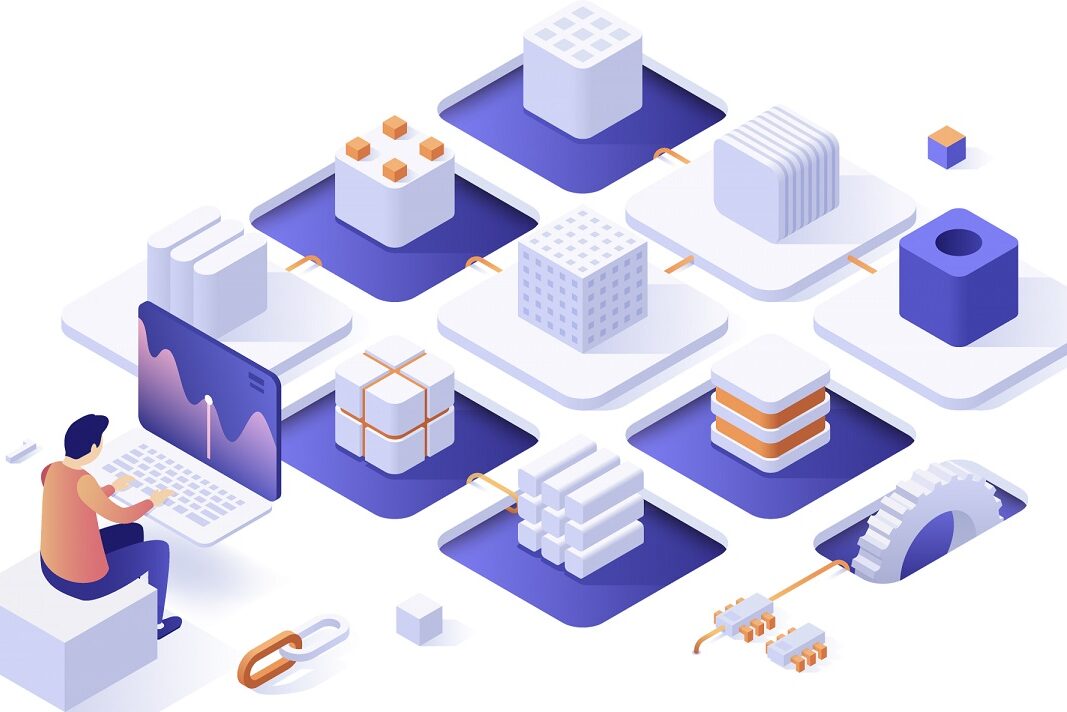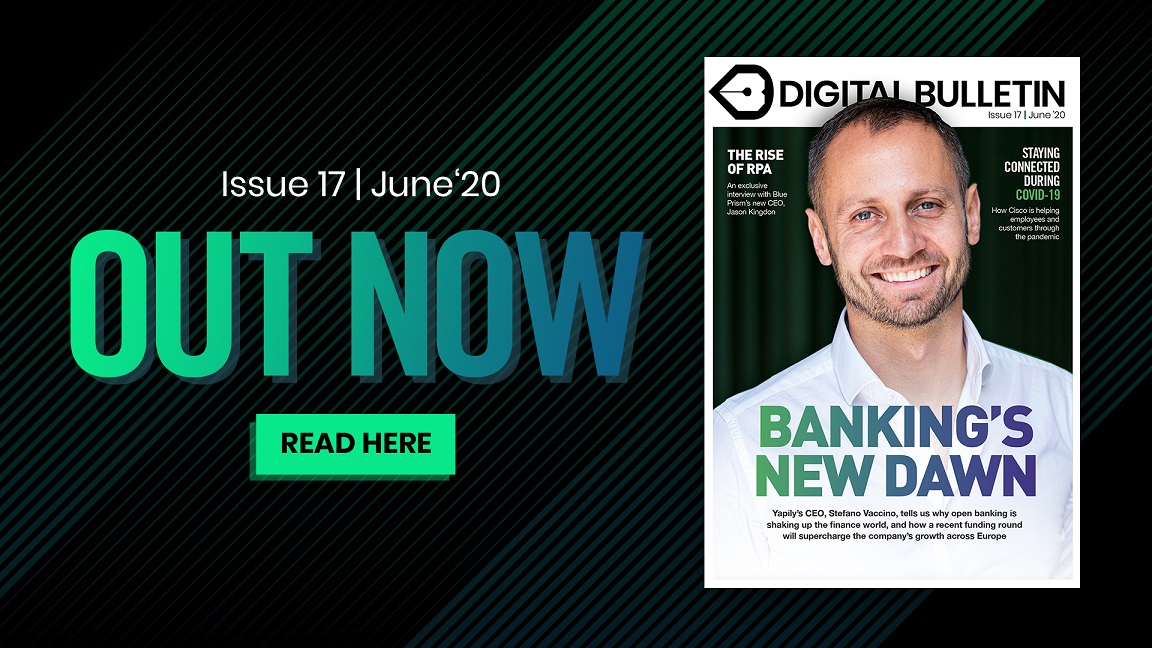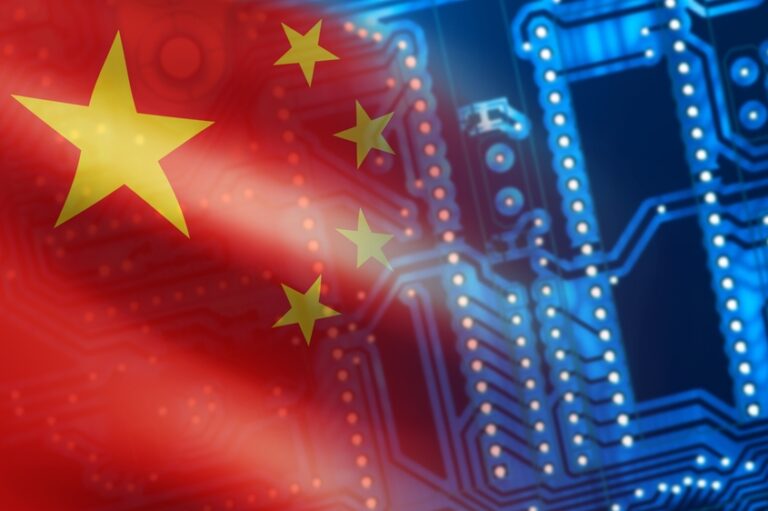
Every industry is, in some way, being reordered by new technologies. For some, the impact is significant if not revolutionary. For others, it is truly transformational – and it’s reasonable to say telecommunications falls into this second category.
Telecoms provision is about to make some giant leaps forward, with the roll-out of 5G and the continued proliferation of IoT devices set to profoundly impact the consumer and enterprise worlds. And as more and more individuals and businesses embrace mobile, the underlying technologies that support this connectivity will become ever more sophisticated.
The organisations driving this change are operating at the bleeding edge of innovation, carrying out research and development at full speed to see how the likes of cloud and artificial intelligence can help our networks meet unprecedented demand. Another technology to throw into this mix is blockchain.
Like many other sectors, telecoms is exploring why blockchain – one of the most hyped technologies of the digital epoch – might hold the key to unlocking new savings and efficiencies. According to recent market research, the blockchain in telecoms market alone could be worth just short of $1 billion by 2023.
One company making strides in this field is Syniverse. A household name Syniverse may not be, but the Florida-based multinational is a key player in the telecoms arena, enabling roaming for many of the world’s largest network operators and providing a host of other enterprise-level services.
“Syniverse is set up across three major business lines being ‘Exchange’, ‘Engage’ and ‘Connect’,” outlines Douwe van der Heij, Senior Director for Product Management, to Digital Bulletin. “‘Connect’ is really where we connect mobile network operators to each other in terms of roaming or domestic traffic.

“In ‘Engage’ we predominantly connect enterprises to mobile network operators, meaning that we facilitate delivery of application-to-person messaging, such as OTP (one-time password) messages if you need to connect to your bank, for example. Then in ‘Exchange’, we are really monetising transactions for our customers. So our customers have a multiplicity of relationships – we serve as the clearing and settlement agent to help them do business with each other.”
It is within the ‘Exchange’ business line that Syniverse has been testing use cases for blockchain. In the practice of clearing and settlement, blockchain’s immutability makes it highly applicable when Syniverse is facilitating transactions between clients. But the bottom line for mobile operators is the opportunity to save time and money, as van der Heij explains.
“Operators are really looking to increase their efficiencies; they’re very cost-conscious in terms of knowing that they need to grow their business while not necessarily having the resources to do so. This has been a trend over the past years where they struggle between growth visions and the level of investment they can make and save.”
Last year, Syniverse announced a collaboration with IBM to use open-source blockchain technology for validating new wholesale billing and charging processes for clearing and settlement services. The pilot was designed to enable “smart contracts” to be coordinated and executed between mobile operators.
Syniverse then worked closely with two of its main customers – Orange and Mobile TeleSystems (MTS) – to test the solution. Van der Heij goes on to explain further.
“We did some design-thinking with IBM around how blockchain could be beneficial to our business and more importantly to our customers’ business,” he says. “From there, we identified that in clearing and settlement – which is one of the major solutions we provide – there is room for optimisation and in strengthening our value proposition with blockchain.
“We decided to partner with IBM because it has already developed a lot of blockchain applications for different markets, so they’ve got global experience in commercially-deployed blockchain solutions. We felt that the path to the market would be a lot quicker and more thorough with IBM’s knowledge in conjunction with our own industry knowledge.
With new technologies like IoT and 5G, there’s definitely a rigorous change happening, so there’s a need to start doing things differently in an ecosystem like mobile roaming
“With new technologies like IoT and 5G, there’s definitely a rigorous change happening, so there’s a need to start doing things differently in an ecosystem like mobile roaming. So why not rethink how we are doing clearing and settlement, and see if we can help customers be more efficient and effective in monetising the business they have between each other?”
The pilot was designed with the GSMA’s Unified Data Record (UDR) standard in mind, a new global industry standard for charging settlements designed to address the sharp rise in device usage as a result of 5G and IoT.
Feedback from Orange and MTS was widely positive. Orange stated that the solution improved operational efficiency in the areas of call event creation and data exchange, while MTS reported “valuable efficiency gains” around auditability and smart contract management.
Syniverse has since rolled out the pilot to its wider customer base, with operators able to engage the solution through the IBM Cloud even if they do not have their own knowledge or resources around blockchain. Van der Heij says this approach has brought its clients together around a common objective.
“Some operators are definitely interested in talking about blockchain technology – they have blockchain solutions themselves – and ask how they can integrate?” he says. “But then there are others that are really very far away from that. Our role at Syniverse is always to be bringing those parties together so something like blockchain should not be a barrier to do business, it should be a facilitator.
“Customers can use our blockchain solution without having the need to build that knowledge or to invest in hardware or software in their premises.”
For van der Heij, any technology implementation should be based around the value it delivers for businesses – not least when it comes to blockchain. He says this is an approach Syniverse has adopted with its IBM solution.
“You risk making technology the topic when it should not be the topic. We are excited about technology in terms of the benefits it can bring to our customers, but what our customers are really interested in is the benefits and not so much in the technology.
“Through blockchain, if we can give them better audit capabilities, more robust security and more efficiencies into their workflows, then that’s what’s important to them. Most of them are not really interested in how we do that as long as we deliver.”

Perception has long been a common hurdle to blockchain adoption. Van Der Heij is of the view that the technology’s association with cryptocurrencies, and especially Bitcoin, has led to hype and some misunderstanding about what blockchain actually delivers and where it holds the most potential.
Deloitte’s 2019 Global Blockchain Study reflected this imbalance. The report revealed that nearly half (43%) of global senior executives surveyed still feel blockchain technology is “overhyped”, which was a higher percentage than in 2018. Yet 86% then went on to state that they believe it will achieve mainstream adoption in the future.
These conclusions suggest that blockchain is following similar maturity curves to other disruptive technologies. Indeed, Deloitte’s study summarised that blockchain is ultimately “gaining traction and acceptance in more sectors”. But from van der Heij’s own experience, a shortage of expertise is still evident in enterprise right now.
“There are two dangers: there’s one group of people who are really excited about the technology but forget that eventually the purpose of all business is to make a profit, so there needs to be value in return for the investment. Then the other group is the sceptical people, who are simply sceptical because they have some level of knowledge but maybe not too much experience,” van der Heij says.
“In the last couple of years there have been lots of POCs (proof of concepts) [around blockchain] but then after that, nothing. For us this was key – to not get stuck in the POC cycle but to proceed because you’ve proven a value.”
Van Der Heij finishes by contending that blockchain’s success or failure in the telecoms industry will, in the end, come down to the biggest players working together.
“We will need to compete and collaborate at the same time, you can’t have a monopoly. It simply is not going to happen and it’s also not good in terms of industry development. So this is what we will do – we’ll talk with our competitors about how we bring these blockchain benefits across to all of our customers. There is certainly some work still to be done but luckily we have industry groups like the GSMA who are readily discussing topics like this.”



